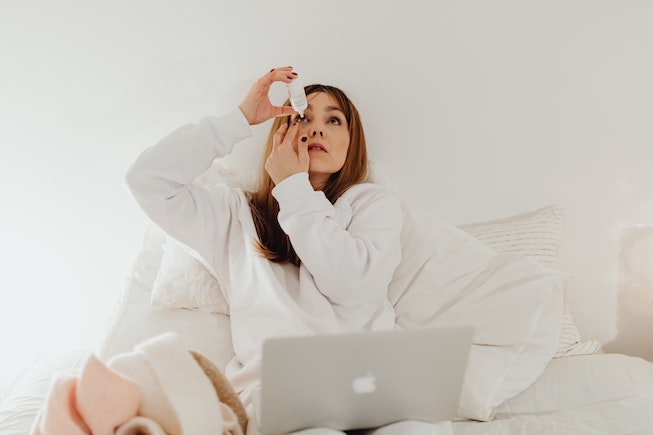Dry Eye Treatment
Find relief from dry, itchy, irritated eyes.

Dry eyes affect millions of people in the United States. It is estimated that as many as 4.88 million Americans over the age of 50 suffer from this uncomfortable condition.
If you need help, book an appointment at Family Eye Health. We’ll help you find a treatment option that brings you the relief you’re searching for.
What are the common symptoms of dry eye?
Everyone experiences dry eye differently because there are so many potential underlying causes.
Typical symptoms include:
- Redness or eyes that appear irritated and bloodshot
- Consistent burning or tingling sensations in the eyes
- Eyes that feel itchy or as if they have something in them
- Increased sensitivity to bright lights or sunlight
- Excessive tearing, or eyes that always appear watery
What causes dry eye?
There are many potential causes of dry eye disease.
Some of the more common causes of chronic dry eye problems include:
Meibomian Gland Dysfunction:
- Disease of the Meibomian glands is one of the main reasons that a person develops dry eye disease. Meibomian glands are finger-shaped, oil secreting glands found in the eyelids. There are about 110 total Meibomian glands and these are the foundation for a healthy tear film. If these glands are atrophied or clogged, the tear film will become disrupted and imbalanced which leads to chronic dry eye disease.
- Symptoms of Meibomian Gland Dysfunction can include redness, a sandy or gritty feeling, burning or tearing. In more severe cases, it can lead to red or thickened eyelids and styes or chalazion.
Blepharitis:
- Blepharitis is inflammation of the eyelids. This condition causes symptoms of eyelid redness, irritation, itching, and crusting.
- Demodex is also a cause of blepharitis which is an infestation of tiny mites in the eyelashes. These can cause chronic inflammation to the eyelids and damage to the Meibomian glands.
Other underlying causes of dry eye disease include:
- Allergies
- Lack of sufficient daily water intake
- Medical conditions such as rheumatoid arthritis, rosacea and Sjogren’s syndrome
- Environmental factors such as wind, sun, and air conditioning
- Defects that affect the eyelid or shape of the eye
- Certain medications such as antihistamines or antidepressants
- Long hours on digital devices such as computers or phones
- Certain cosmetics or face creams
- Improper use of contact lenses
Because the underlying causes vary, treatment methods after diagnosis will also vary according to the patient. It is also not uncommon for there to be more than one cause for dry eye.
How is dry eye diagnosed and treated?
A complete and detailed eye exam with one of our eye doctors is essential for us to be able to understand the entire health of your eye and the underlying cause for your dry eyes.
During your visit with us, you will be completing several tests such as imaging of the Meibomian glands, measuring how quickly your tear film evaporates, and evaluating the health of your tear film. Once we have completed these specific dry eye tests, we can determine what type of dry eye disease you have and what the best form of treatment will be for your condition.
Some of the typical treatments include:
- Prescription eye drops to combat inflammation
- Treating oil glands with Meibomian gland expression and/or Intense Pulsed Light (IPL) Therapy
- Warm compresses and proper lid hygiene
- Blinking exercises
- Lifestyle changes
- In some cases, low-dose antibiotics may also be prescribed
What is Intense Pulsed Light (IPL) Therapy?
Intense pulsed light (IPL) therapy treats the underlying cause of Meibomian gland dysfunction and dry eye disease. It is a painless treatment that delivers pulses of light to liquefy and release oils from your Meibomian glands.
Normally, you will need 4 sessions of IPL therapy separated by 2 weeks at a time. After each session, you should notice an improvement of dryness, but you will feel the most relief after all 4 sessions have been completed. Touch-up treatments is typically needed between 6 to 12 months depending on how severe the dry eye disease. This treatment is intended for patients who are at least 22 years old.
If you are interested in learning more about IPL therapy and would like to know if you are a candidate, our doctors would be more than happy to evaluate your eyes and prepare a dry eye treatment plan with you. We look forward to hearing from you.
Dry eyes are not only uncomfortable — they can also be bad for the health of your eyes. Book an appointment at Family Eye Health to find relief.

